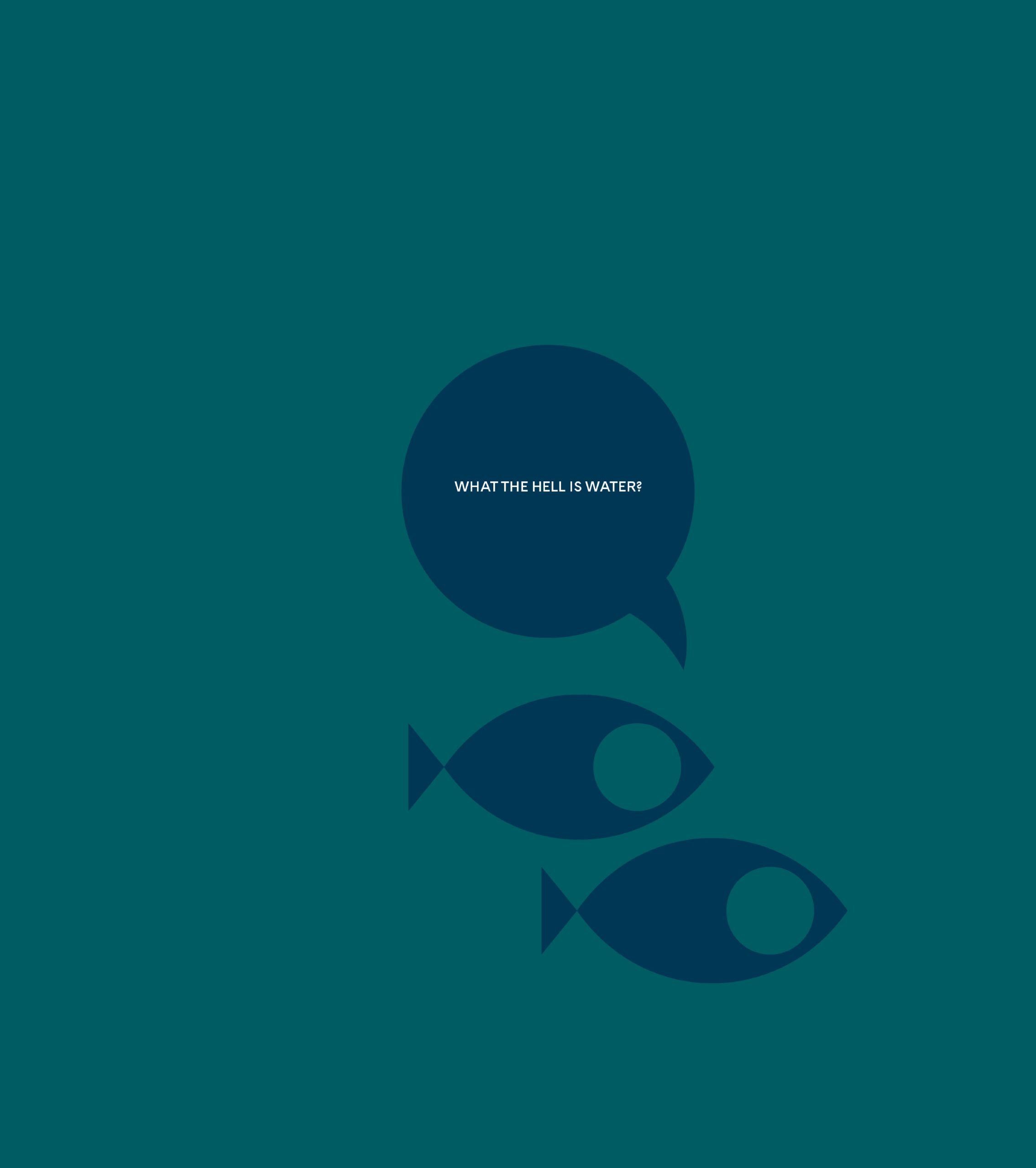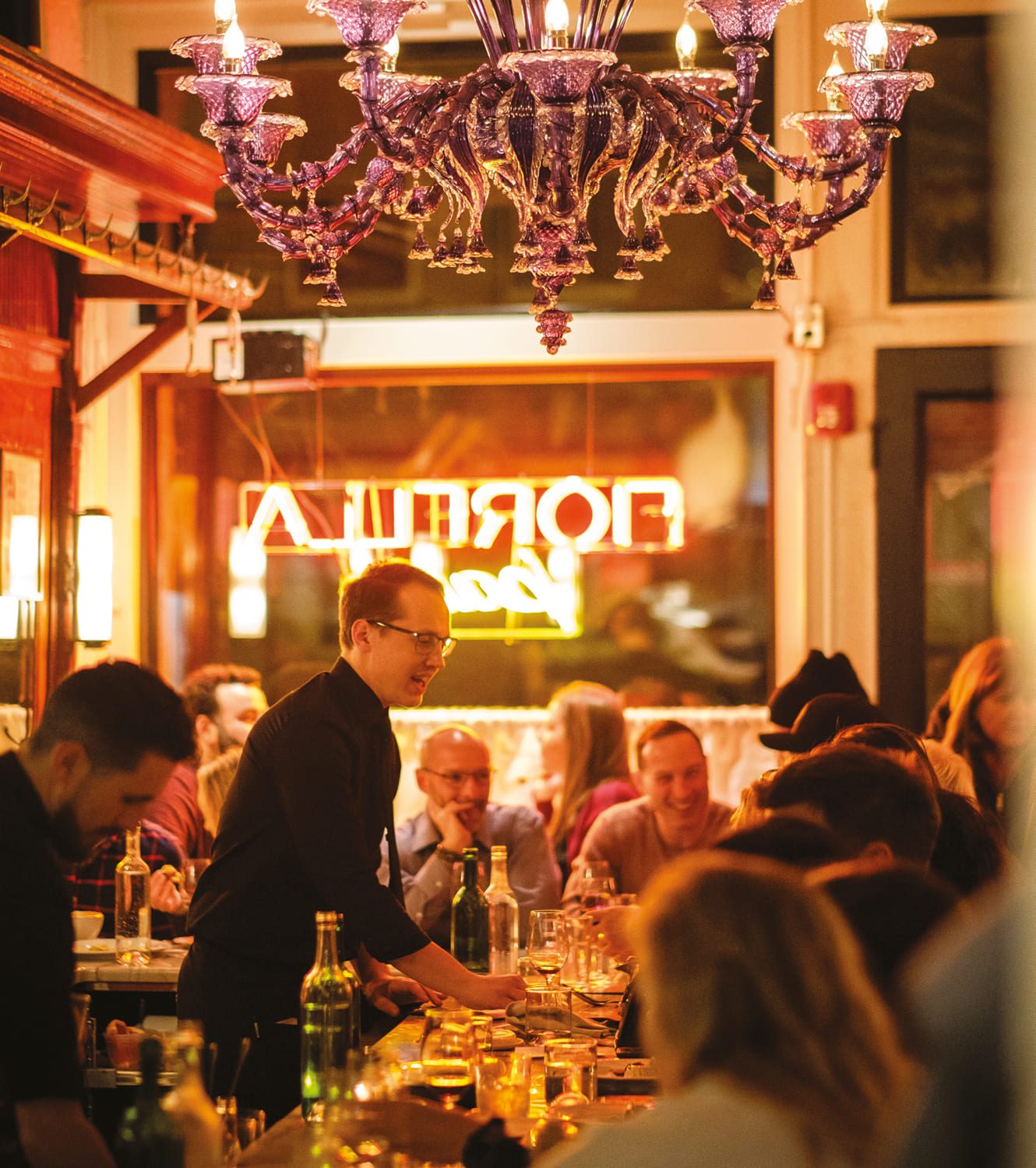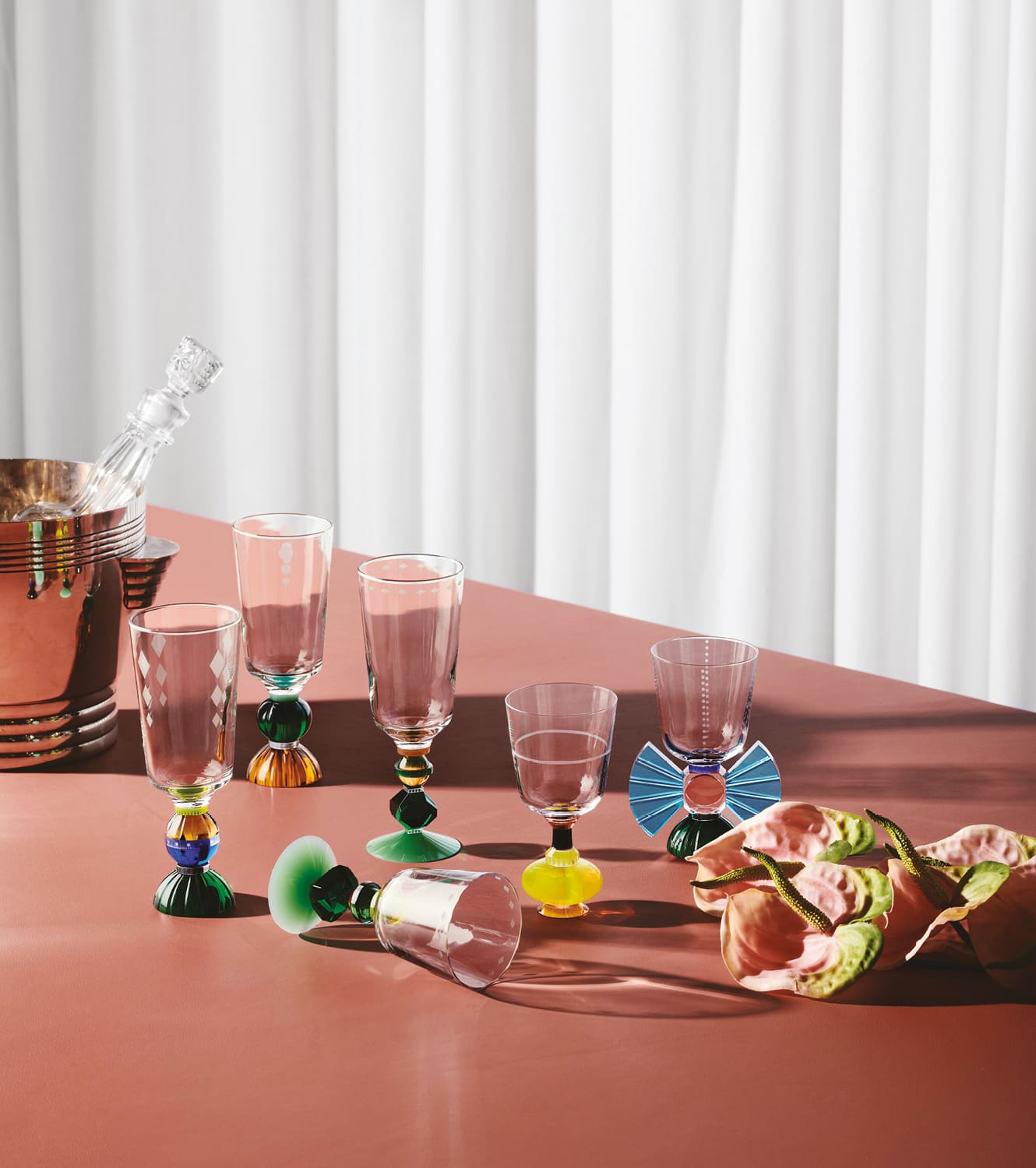
DOORS OF PERCEPTION
John Irwin delves into the art of wine talk and explores how our individual cultural backgrounds influence how we see the world – and taste it
Is the essence of a wine more important than the way it is described – in Shakespeare’s words, “would a rose by any other name smell as sweet?” Or could it be that the words we use to describe our favorite bottles influence our enjoyment of them? Is it possible that we think, therefore we taste? John Irwin delves into the art of wine talk and explores how our individual cultural backgrounds influence how we see the world – and taste it.
Proust’s Mencía
In November of 2022 Punch contributor John McCarroll wrote an article titled “The Wine Flaw of Our Times” about a retronasal aroma on the finish of some wines commonly referred to as “mousiness.” The “…of Our Times” part of the title refers to the fact that it’s a descriptor almost exclusively associated with natural wines, thought to be caused by some combination of long fermentations, warmer global (and therefore cellar) temperatures, and less-than-reductive winemaking (basically, “Spring Break, Daytona” for bacteria). “Mousiness,” when present in a finished wine, inspires such exotic aroma descriptors as “hamster cage,” “corn chips,” or – depending on whom you ask – “authenticity.”
I have drunk many mousy wines, dozens, maybe even hundreds, over the years. Except… I never knew it. I had heard the term here and there and understood the general idea but never thought, “oh, this wine is mousy.” But when I read McCarroll’s article, I learned that the smell is correlated to Brettanomyces (a type of yeast also known as Brett, which I am sensitive to), and that little factoid lodged itself into an accessible part of my brain.
So, a day or two later, I ordered a bottle of Mencía from a natural-leaning producer that I love, gave it a sniff, noted the unusually high concentration of Brett, and then tasted the wine. And, there it was, in a flash of awareness: an unconscious resurfacing of memories of my first pet, a hamster named Snickers. The wine was mousy, clear as a bell tone. But, not only that. I also had the Proustian recognition that I had tasted this before. Many, many times. Another door of my perception had opened. My life was forever changed.
With a misplaced obligation of politeness to the world around me – as if I’d uncovered a conspiracy that threatened all human order – I continued to sip the wine. I did not enjoy it. My wife, who was with me, having not yet bit into the fruit from the Tree of Knowledge, blissfully polished off a couple of glasses. “Good wine,” she said and smiled.


“How much of our perception is influenced by upbringing, culture, exposure, and language? And within that question, what is right in front of us that we cannot see?”
COMING OF AGE
Do you remember the moment – you were probably a teenager, looking at the stars or a lava lamp – when you initially recognized that our experiences are limited to our individual perception? It probably went something like this: “Ok, but what if, like, the blue that I see is different than, like, the blue that you see? Like, what if your blue is my red?”
It’s rote and universal but profound, so allow me to resurrect this stoner philosophy to new ends: what if, like, the wine I’m tasting is different than, like, the wine you’re tasting? Like, what if your “pear” is my “pineapple”? And, yet further into the unknown: what if I’ve never had a pear? Is my perception of the wine the same or different? How much of our perception is influenced by upbringing, culture, exposure, and language? And within that question, what is right in front of us that we cannot see?
SOMETHING BLUE
“Blue didn’t always exist.” This, as with all provocative or insane statements, begs for context. In his 2010 book, Through the Language Glass, linguist Guy Deutscher recounted an intriguing discovery made in the mid-19th century by a British politician named William Gladstone. Gladstone moonlighted as a classics obsessive; ten years before becoming the Prime Minister of the UK, he published a 1,700-page opus entitled Studies on Homer and the Homeric Age. It was received with the kind of rapture you would expect, which is to say that most people – if they paid any attention at all – were more amazed by his obsession than the work itself.
But, only an obsessive could have discovered a fascinating little detail about one of the most famous books in the history of Western literature. In Homer’s Odyssey, throughout 24 volumes and 134,560 words, the author does not utter a single word that could be taken to mean “blue.” In fact, what Gladstone discovered is that Homer’s world was remarkably colorless. Words that mean “red,” “yellow,” “green,” and “violet” made brief cameos, but they were used almost at random, more to get at the idea of saturation than color. He called honey “green” and iron “violet.” And as for the Mediterranean Sea itself? The aqueous object upon which the mighty Odysseus sails for verse after verse? That is not blue but “wine-dark.”
It would be a strange but meaningless historical footnote if this were an outlier. Perhaps Homer made an artistic choice, or maybe he was colorblind and lacked a good editor (the legend that Homer was fully blind is a myth). But it’s not an outlier. Another researcher named Lazarus Geiger pulled on Gladstone’s tantalizing thread some years later and discovered more peculiarities. It turns out the Old Testament never mentions the color “blue.” Ditto the Koran and the ancient Icelandic sagas. And the Hindu Vedic hymns, where they describe all the colors of heaven? Blue was left off the guest list.
A millennium of ancient texts and nary a mention of that which colors the sea and the sky.
SHADES OF MEANING
The Russians have two words for what we know as blue: “siniy” (to us, a dark blue) and “goluboy” (a light blue). Both of these colors would appear, to any westerner, as two shades of the same color. But to a Russian, these colors are as distinct as green and yellow would be to us.
This is to say that color is a cultural construct. Where I, as an American, will distinguish between blue and green, other cultures – like Russia – might establish more nuance, adding additional vocabulary for what they’re perceiving. The opposite is also true: in most scenarios, the Japanese lump what we would call, separately, “green” and “blue” into a single word: “aoi.” (As an aside: “midori,” the term used in Japanese to refer to the concept of “green” as a color, was not widely adopted until after World War II. So, when traffic lights were imported from the US, they were described by the local newspapers as having lights of “red,” “yellow,” and “blue,” which is how they are still described today).
If you point out “yellow” school buses and “white” clouds to any child, you are not perpetuating an objective visual sense but a subjective way of dividing up the world based on how those things were once presented – and then reinforced – to you.
Back to Gladstone, Gieger, and Homer: if color is cultural, maybe our ancient forebears didn’t have a word for blue. It didn’t occur to them because it wasn’t necessary; ocean and sky aside, blue is not a color you see very often in nature. Much like the Japanese are building a new relationship between blue and green, our ancestors likely demarcated their color world over generations. From that lens, it becomes easy to understand why Homer’s sea was “wine-dark.” He was describing it in relative terms. What’s interesting is how these cultural differences may affect how we think. For example, a 2008 study conducted by a joint team from Stanford, MIT, and UCLA showed that Russians could identify different shades of blue faster than their western counterparts. A similar study conducted in 2005 offered the flip side of the equation; the Himba tribe of Namibia, who have no word for blue, were demonstrably slower than English speakers to identify a color difference between blue and green. Yet, the Himba have several terms for “green.” When they were shown different shades of the color, they were predictably faster than the control group at identifying them.
Language, then, strongly relates to how we perceive the world. To quote Deutscher: “Is it possible that linguistic differences can be the cause of differences in perception?” Or, to put it another way, if Homer didn’t have a word for blue, could he even see it?
COLOR TO TASTE
If you were to crawl into a time machine and zap yourself back, you would likely discover that Homer could see a color difference between the ocean and, say, a boat. It’s not that he couldn’t perceive differences; without categorization through language, context probably would have been a crucial ingredient to recognition.
In wine, we experience this all of the time. Blind taste a wine-agnostic friend, and they will have no idea what the wine is or any meaningful descriptions. But, if you blind taste them two wines, then they can expound on the differences through their cultural totems (“this is more like lemonade,” “this has more fruitiness,” etc.). It’s a common belief that, with time and experience, we evolve our language to describe what we’re sensing. However, it’s more often that the opposite is true; language comes first, opening the door to perception.
In his 2022 research paper for the Institute of Masters of Wine, Justin Martindale (MW), conducted a case study on the “Evolving Language of Minerality in Wine Tasting.” He evaluated more than 20,000 Decanter magazine tasting notes from 1976 to 2019 and found that the term “minerality” was not common until the early 2000s, hitting its peak in 2010 when it appeared in more than 15 percent of all tasting notes. How could something so familiar be nearly unheard of just a couple of decades ago? Did wines before the new century not exhibit minerality? More likely, as in Homer’s colorless world, we’re not processing the presence if we don’t have the language. It’s a “tree falls in the forest” problem; if a wine has minerality, but no one’s there to name it, is it ever really there?
HOW'S THE WATER
I’m not arguing that language invents experiences (though I’m not closing the door on that, either), but it can sharpen them into focus. To quote the writer Joshua Rothman, “to describe our thinking is to domesticate it.” My experience with a mousy Mencía mirrored my experience with other aromas like petrol, reduction, petrichor, and corked wines. In all cases, language pre-dated my perception.
What’s profound about this isn’t just how it affects individuals but how they add to a dramatic whole; how entire cultures, civilizations and eras can perceive the world differently due to little more than a cosmic clerical error. It’s as if, through our life and history, we’re unlocking new doors to perception through language and slowly filing in.
All this brings to mind a well-known parable from author David Foster Wallace: “Two young fish are swimming along, and they come upon an older fish swimming in the other direction. The older fish nods and says, ‘morning boys, how’s the water?’ The two young fish continue swimming along for a bit before one turns to the other and says, ‘what the hell is water?’”
It can be frustrating to feel at arm’s length of a thing, that liminal space just outside of perception. When you learn about wine, you can scrape the edges for weeks, months, or years, living on the edge of recognition. But from another lens, this is the greatest gift of our lives; in wine and colors – as well as in art, science, and nature – there is always something new, something to be discovered, and the challenging, glittering truth that there is more we cannot yet see. This life is endless because we cannot know what we do not yet know.
If only we had the words.
John Irwin is a Maze Row specialist and Italian wine ambassador with Vinitaly International.
We recommend
A QUESTION OF TASTE
How does the mystery of taste apply to wine? Stephen Bayley, an outspoken commentator on modern culture, art and design who has made it his life’s mission to unravel the riddle of taste, heads to 67 Pall Mall London to ask the queen critic of wine, Jancis Robinson
PHILADELPHIA STORY
Set in a former butcher shop in the melting pot that is South Philly, Fiorella is a temple to pasta and wine that celebrates both simplicity and authenticity. John Irwin pays a visit
BRIGHT WINES, BIG CITY
Jordan Mackay meets Jay McInerney for dinner to retrace his journey from literary sensation to leading wine columnist, sampling some fine bottles along the way
THE WHIMSICAL AND COLLECTABLES: DISCOVER THE LATEST IN GLASSWARE DESIGN
New generations are challenging traditional drinking etiquettes, as Debika Ray investigates the modern world of glassware




